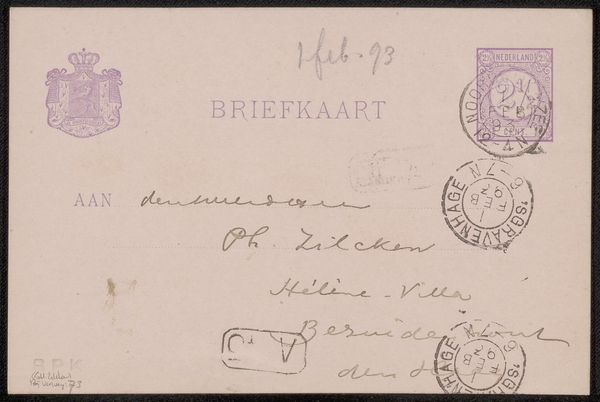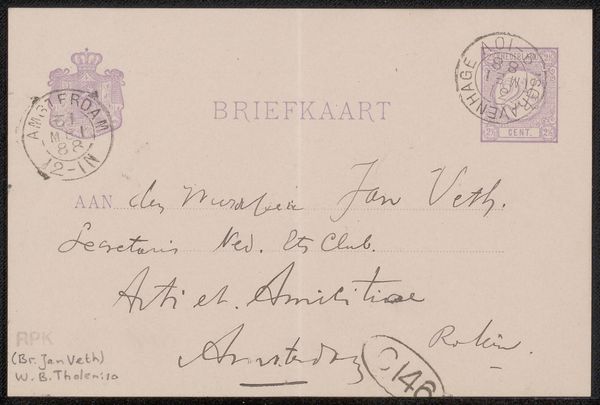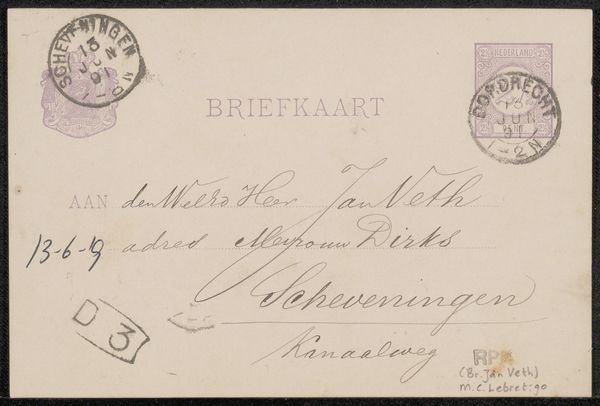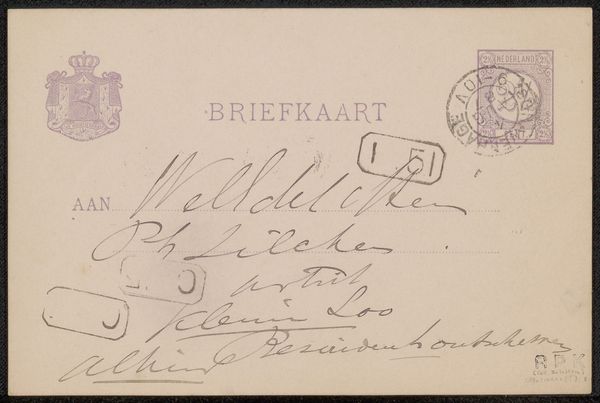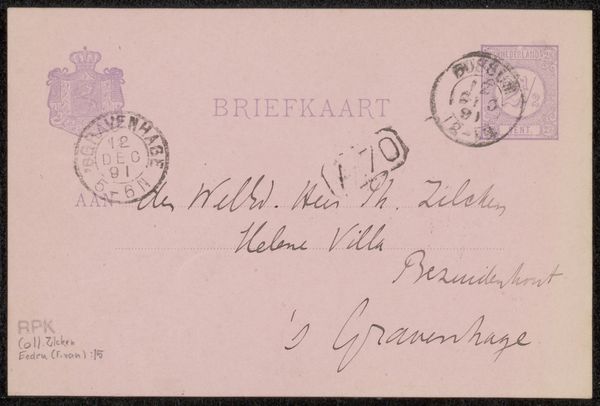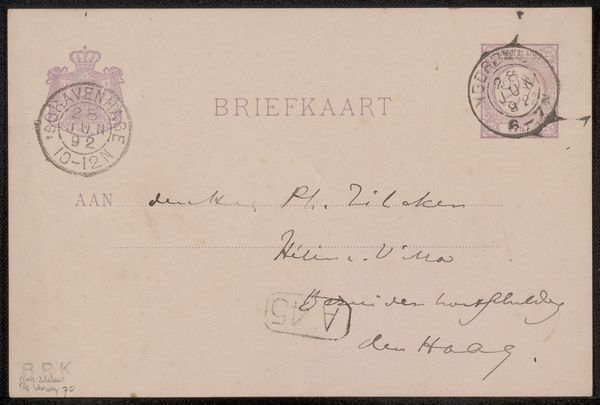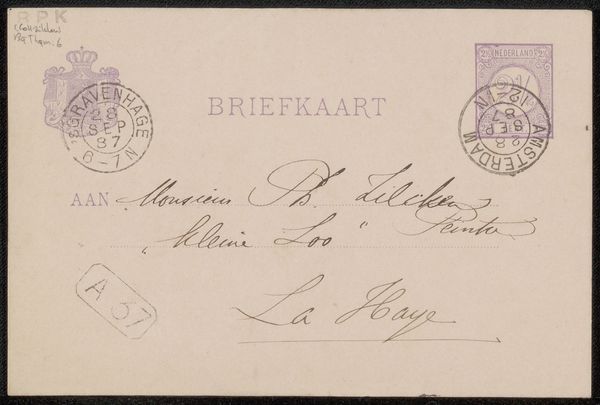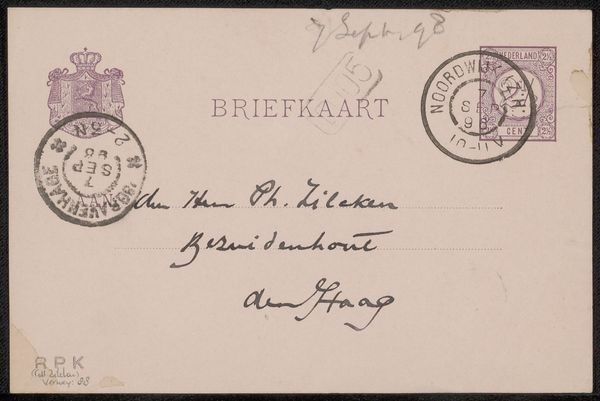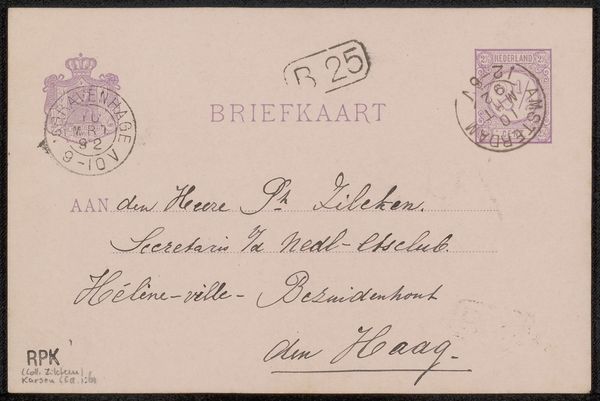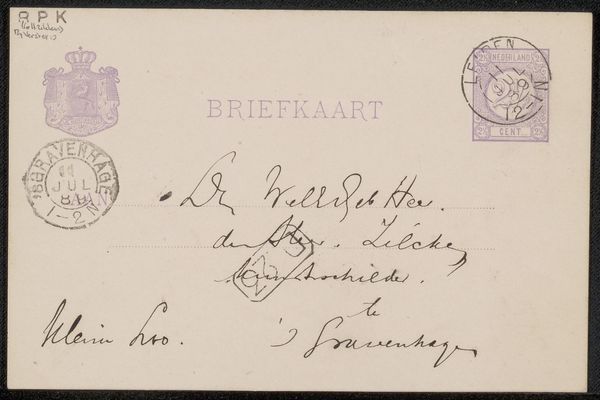
drawing, paper, ink, pen
#
portrait
#
drawing
#
pen sketch
#
old engraving style
#
hand drawn type
#
paper
#
personal sketchbook
#
ink
#
hand-drawn typeface
#
ink drawing experimentation
#
pen-ink sketch
#
pen work
#
sketchbook drawing
#
pen
#
post-impressionism
#
sketchbook art
Copyright: Rijks Museum: Open Domain
Editor: This is Jacob Maris' "Briefkaart aan Philip Zilcken," likely from 1892, a pen and ink drawing on paper. It’s surprisingly delicate, given its everyday purpose. What visual echoes do you see in this unassuming work? Curator: Indeed. It seems simple, but consider the weight each of these elements carries. The Royal crest embossed on the upper left, the postage stamp on the right. These aren’t merely decorative; they’re assertions of authority, commerce, and connection. This "briefkaart" serves as both an invitation and a contract. How does the hand-written address modify that? Editor: It makes it more personal, of course. The stamp and crest are quite formal, but the cursive adds an intimate touch, and soften it. Curator: Precisely. It’s the interplay between the formal and informal that fascinates me. Notice how Maris doesn’t obliterate the pre-printed text “Briefkaart.” It's consciously integrated, reminding us that communication always operates within a pre-existing framework, shaped by social and cultural norms. The artist is using multiple levels of meaning within one small form, what does the receiver decode consciously versus subconsciously? Editor: That's something to ponder; to consider the multiple visual and textual voices present is powerful. I suppose the modern equivalent would be an email incorporating emojis! Thank you for shedding light on this. Curator: A fascinating thought. Today we expect all correspondence to express our brand, yet authenticity is valued. The tension still exists. Food for thought indeed.
Comments
No comments
Be the first to comment and join the conversation on the ultimate creative platform.
